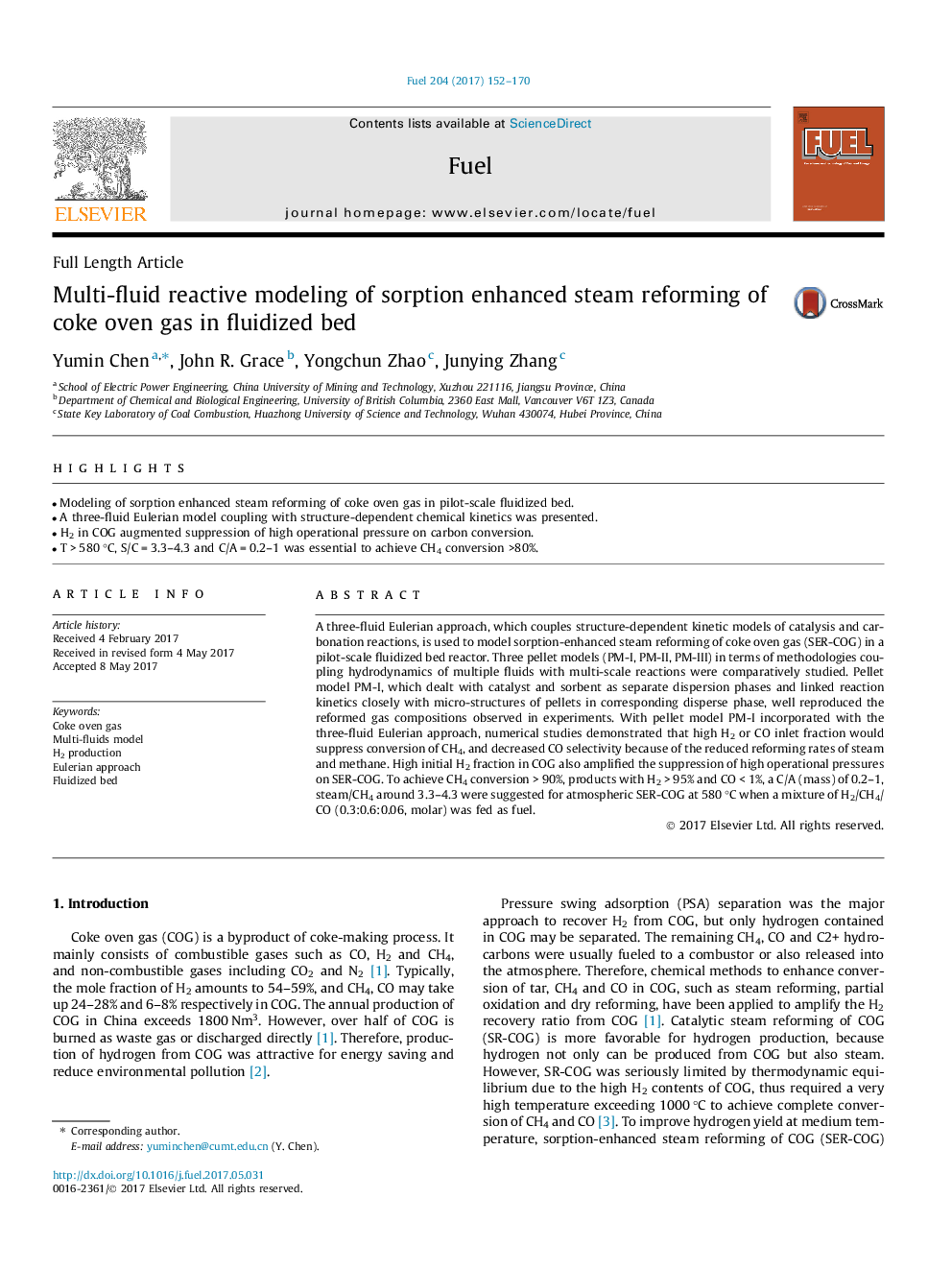| Article ID | Journal | Published Year | Pages | File Type |
|---|---|---|---|---|
| 4768660 | Fuel | 2017 | 19 Pages |
Abstract
A three-fluid Eulerian approach, which couples structure-dependent kinetic models of catalysis and carbonation reactions, is used to model sorption-enhanced steam reforming of coke oven gas (SER-COG) in a pilot-scale fluidized bed reactor. Three pellet models (PM-I, PM-II, PM-III) in terms of methodologies coupling hydrodynamics of multiple fluids with multi-scale reactions were comparatively studied. Pellet model PM-I, which dealt with catalyst and sorbent as separate dispersion phases and linked reaction kinetics closely with micro-structures of pellets in corresponding disperse phase, well reproduced the reformed gas compositions observed in experiments. With pellet model PM-I incorporated with the three-fluid Eulerian approach, numerical studies demonstrated that high H2 or CO inlet fraction would suppress conversion of CH4, and decreased CO selectivity because of the reduced reforming rates of steam and methane. High initial H2 fraction in COG also amplified the suppression of high operational pressures on SER-COG. To achieve CH4 conversion > 90%, products with H2 > 95% and CO < 1%, a C/A (mass) of 0.2-1, steam/CH4 around 3.3-4.3 were suggested for atmospheric SER-COG at 580 °C when a mixture of H2/CH4/CO (0.3:0.6:0.06, molar) was fed as fuel.
Related Topics
Physical Sciences and Engineering
Chemical Engineering
Chemical Engineering (General)
Authors
Yumin Chen, John R. Grace, Yongchun Zhao, Junying Zhang,
